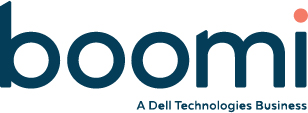Boomi Sets 2020 iPaaS Roadmap; EDA, Full Cycle API Management, DevOps, AI/ML All On Tap
During last month’s Boomi World conference, execs showcased how they plan to take their iPaaS cloud integration as a service to new use cases. IDN speaks with Boomi execs about plans for EDA, DevOps, expanded API Management and even AI/ML.

Div Manickam
director of portfolio messaging 

Ed Macosky
senior vice president, product & solutions 
|
iPaaS pioneer Boomi has set the stage for where it will take its cloud-based integration platform-as-a-service in 2020 and beyond.
During last month’s Boomi World conference, execs showcased on-going efforts to add Event-Driven Architecture, DevOps support, full API Management lifecycle support and machine learning. As a result, Boomi intends its iPaaS to accelerate and extend benefits to developers, IT and business users.
“We shared our Boomi roadmap, which focuses on three tenets: Connect everything; Run anywhere, Engage anywhere,” Div Manickam, Boomi’s director of portfolio messaging told IDN.
”With iPaaS, people automatically think of integrations for data and applications. We have a lot new there, but Boomi is also extending that to include connecting things and people,” she said. “You wouldn’t typically think of [connecting] people, for example, with an iPaaS vendor,” she added.
Boomi’s vision is to take push cloud integration to deliver new capabilities not traditionally coming from iPaaS, Ed Macosky, Boomi’s senior vice president, product & solutions. This vision looks to take strong advantage of company’s unified iPaaS architecture, which brings together five core capabilities - Integration, API Management, B2B/EDI, MDM (Master Data Management) and Workflow/process apps and automation, he said. Here are some of the top highlights from the Boomi World rollouts and previews.
Event-Driven Architecture – Empowering Real-Time Streaming and EventsTo meet this need, Boomi is investing in Event-Driven Architecture (EDA) capabilities to help customers more easily support a new generation of real-time apps and IoT projects that require support for streaming and events.
“We see the whole ETL space is evolving to streaming, as well as data quality and data prep. So we’re working on queueing and looking to support native streaming” Macosky said. Boomi’s approach to EDA aims to support multiple use cases, including IoT data, social feeds and more, he added.
Boomi CTO Michael Morton described the EDA investments this way during the event. “Customers are looking to Boomi to help solve their business problems and allowing them to achieve all kinds of business outcomes faster. To do so they have to connect everything in real-time,” noted.
To deliver strong EDA capabilities, Boomi is building out an EDA ecosystem of partners. As an example, Boomi is teaming up with Solace and it’s PubSub+ platform. The EDA capabilities coming from this partnership will let customers tackling several pain points, officials said.
Among them:
In addition to Solace, Boomi also has EDA partnerships with sister company Dell EMC (with Pravega) and leading providers of message brokers, event meshes, streaming data and pub-sub platforms.
Further, Boomi already offers integrations for Amazon SQS, Microsoft’s Azure Service Bus services, and Pivotal’s RabbitMQ.
EDA is becoming more and more important to customers, Macosky told IDN. “Just during the show, customers asked us, ‘What are you doing for database eventing so that I can replace some of our older technology, especially from a middleware [perspective].” Boomi will be considering that sector, he added.
Boomi’s expanding foray into EDA reflects recent findings from industry analyst Gartner, which stated: “EDA is at the very heart of the real-time-sensitive digital business. Organizations capture real-world business events in digital form as they happen, by ‘listening’ to event sources like Internet of Things (IoT) devices, mobile applications, ecosystems, and social and business networks.”
Boomi’s Full Cycle API Management & API-First ArchitectureFor many iPaaS adopters, granular, end-to-end API Management goes hand-in-hand with pre-built connectors for cloud apps.
To that end, Boomi rolled out “full cycle” API Management at Boomi World. The new componentry aims to allow users to leverage their data and processes to a high degree, as well as work more seamlessly and efficiently with partners and even customers, Manickam said.
In specific, Boomi execs showed three additional capabilities key to API Management - API Proxy, API Gateway, and API Developer Portal.
“Organizations want to extend the use of their data and application assets beyond the confines of their ecosystem to a broader set of consumers,” Boomi chief product officer Steve Wood said of the API rollouts. “They want to engage their own customer base and provide an expanded breadth of services by extending them as APIs. The new Boomi full lifecycle API Management capabilities deliver the ease of use and time to value to quickly spin up APIs while providing enterprises with the requisite security, governance and scalability assurances to extend their reach.”
Tuning iPaaS for DevOps and CI/CD PipelinesAnother area not traditionally associated with iPaaS is support for DevOps and CI/CD pipelines to aid developers.
Boomi execs says iPaaS can bring tons of value to developers working with SaaS integrations and hybrid apps by making DevOps more seamless and hassle-free.
“We’ve always have been, always will be, an easy to use low code / no-code integration platform as a service. But when we move into central IT, they are asking for us to plug into more complex solutions,” Macosky said, “It’s time to bring DevOps to iPaaS solutions that are low-code / no-code, configuration-based tools - and not have iPaaS in a silo anymore.”
To connect-the-dots between iPaaS and DevOps, Macosky shared this walk-through of Boomi’s thinking: “Our customers are already building solutions that include integration, but they are writing business process outside of Boomi. They’re writing their own code.
“So, they are now saying to us, ‘I need to deploy this app that I built somewhere else. And, along with that, I want to bring along the integration changes that I made. I need to package those together and push them through an independent pipeline.’
“Right now, many iPaaS solutions just don’t so that. They sit off to the side. So, we’re plugging into their DevOps pipeline.
Bottom line, he said, is to make building and running all that code less complicated for the developer. Macosky went on to share an example:
“Say a customer has Salesforce, NetSuite and other on-prem apps. The developer can customize elements in those apps. So, now a developer has code changes to the apps. But they don’t want to house all that in the individual apps themselves.
They’d rather house all that code in Git, he added. On top of that, developers may also write integration code for how all these systems work together.
That complicated mix of custom app code, logic and integration code needs to work together – and stay in sync. That’s why customers are looking to Boomi’s iPaaS to help them define a place where all the pieces of the project can be housed in one place, he explained.
“The Boomi iPaaS can work with a company’s DevOps ecosystem. We embrace Jenkins and GitHub and make sure we can plug into [other DevOps tools]. Further, our Boomi connector SDK lets developers write more complex connectivity.” Macosky added.
This capability arises in large part from a Boomi partnership with CloudBees (home to Jenkins architects). The iPaaS integration with DevOps and CI/CD also will continue, he added, as Boomi became the first iPaaS vendor to join the Continuous Deliver Foundation (CDF).
Boomi Marries ML and APIs for Intelligent Chatbots, Business InsightsBoomi is also driving its iPaaS to support new-gen engagement for people.
The latest updates support a new family of smart conversational bots and present deeper insights about how enterprise integrations work under the covers, Manickam said.
Boomi intends to combine AI/ML with its iPaaS platform to let customers build “conversation AI solutions... that provide a new, personalized, effective way to communicate with customers and streamline business operations,” as officially described the initiate at Boomi World.
With the Bot Framework, developers build a chatbot that supports any combination of business rules and AI. The framework enables a low-code developer to build a chatbot that combines business rules and AI/ML that can intelligently tap into the information a company already has gathered, she added.
Manickam shared a project where Boomi is using machine learning with chatbot technology to help create a ‘professor bot’ at one customer site. “We’re using integration to redefine engagement,” she said. “Students today might prefer a bot to answer their question” rather than go to a website and read an FAQ – or wait for a professor to respond.
In practice, Boomi’s new framework presents a packaged set of pre-built customizable assets. Further, these bots can ‘learn’ based on interactions from users.
Manickam also mentioned another ML-powered update that is driving innovative engagement. With this use case, business users can get a business-centric view of how integration activities support business needs. “Without needing to know SQL or other coding skills, users can engage with data to learn how their business is functioning,” she said.
She shared an example of using a voice interface to ask the Boomi system how many staff had been on-boarded in a certain time.
“With Voice, not only can I get the general answer about on-boarding company-wide. But [through voice] the system can identify the person asking, so we can deliver a personalized answer” depending on if the person is the head of a group, a whole department or the entire company, she said.
Extending iPaaS Support for B2B, File Transfer Use CaseIn early November, Boomi further leveraged its API-first approach with the rollout out of a solution to speed B2B integration projects. The Thru MFT Connector and Thru MFT API’s, provide enterprise IT departments with governance and control of all file transfers across the network from within Boomi.
Thru MFT Connector provides out-of-the-box access to Thru’s secure file exchange for any Boomi process. The connector consolidates a crucial set of file transfers capabilities into a single, centralized system. These include high performance, granular audit visibility, automated partner onboarding, reusable endpoints and cloud-readiness. |




